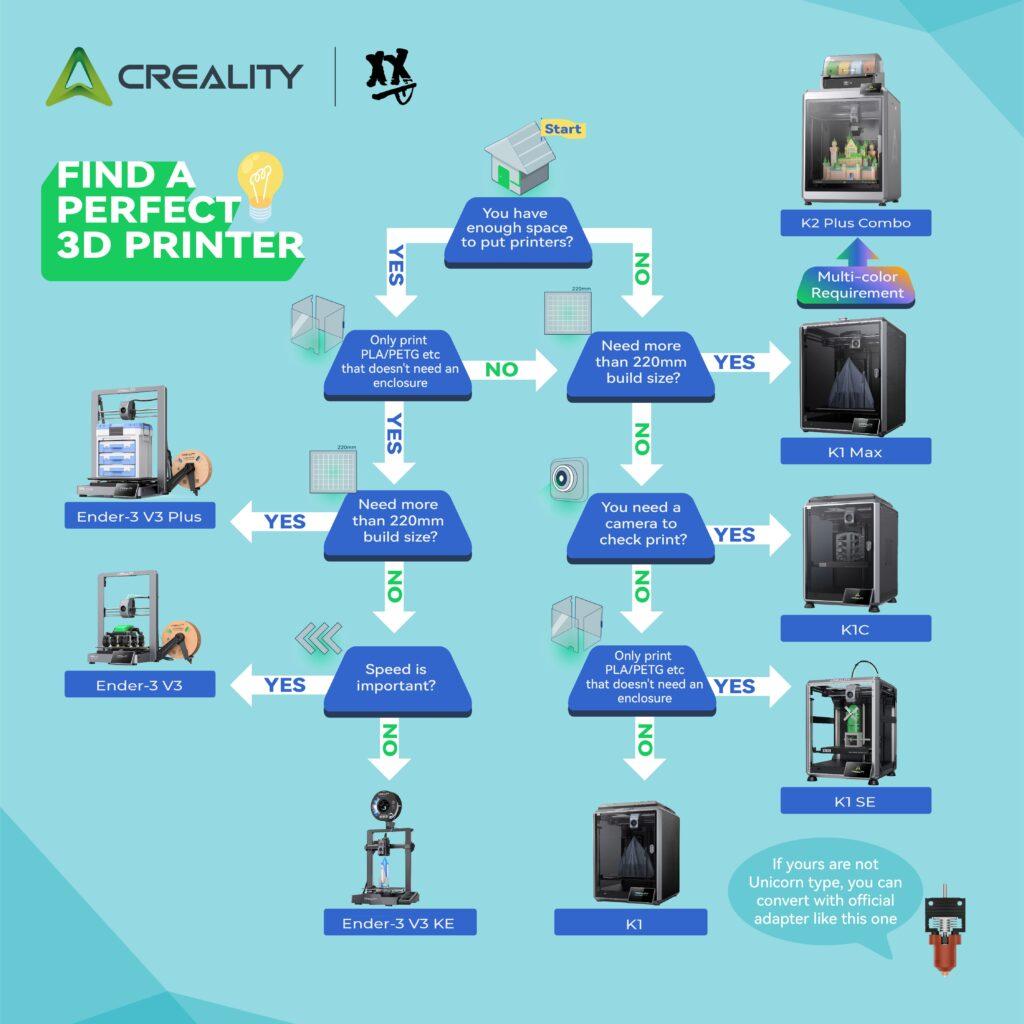
If you thought 3D printing was revolutionary, buckle up because 4D printing is about to take things to a whole new level. Imagine a world where your furniture assembles itself, clothing adapts to the weather, and medical implants adjust to your body’s needs—all without motors, electronics, or human intervention.
Sounds like something straight out of a sci-fi movie, right? Well, it’s not just theoretical. Researchers and engineers are already making 4D printing a reality, and its implications could change healthcare, fashion, construction, and even space exploration.
Let’s dive into what 4D printing really is, how it works, and why it’s a major leap forward from traditional 3D printing.
? What Exactly Is 4D Printing?
4D printing builds on 3D printing but introduces time as the fourth dimension. This means that instead of remaining static, printed objects can morph, change shape, or adapt their function when exposed to specific environmental triggers like heat, moisture, light, or magnetic fields.
? Example: Imagine printing a flat sheet, but when you dip it in warm water, it folds itself into a fully functional chair. That’s not a fantasy—that’s the power of 4D printing!
The magic behind 4D printing lies in programmable smart materials, which have been designed to react predictably to certain stimuli. This self-transformation opens up huge possibilities across multiple industries.
? From 3D to 4D: The Evolution of Printing Technology
Let’s take a quick trip down memory lane.
? Traditional Printing (2D): It all started with printing ink on paper—newspapers, books, and documents.
? 3D Printing (1980s-Present): This was a game-changer! Instead of ink, materials like plastic, metal, and even biological cells were printed to create solid, three-dimensional objects.
? 4D Printing (Future Era): The next evolution, where printed objects aren’t just static but dynamic, responding to their surroundings without external mechanical parts.
Where 3D printing gave us rapid prototyping and custom manufacturing, 4D printing takes it a step further by making objects adaptive and intelligent.
? Real-World Applications & Implications
So, how could this tech affect your daily life? Let’s explore some game-changing applications.
? Healthcare & Medicine
Medical science is one of the biggest beneficiaries of 4D printing.
✔ Self-adjusting implants – Imagine receiving an implant or stent that adapts to your body as it heals, eliminating the need for additional surgeries.
✔ Smart bandages – Bandages that tighten or loosen based on temperature and infection levels.
✔ 4D-printed drug delivery systems – Pills that expand or contract to release medication at the right time and place in your body.
Real-World Example: MIT researchers have been developing 4D-printed medical stents that automatically expand inside the body when exposed to heat. This could revolutionize cardiovascular treatments, making procedures safer and less invasive.
?️ Construction & Infrastructure
Our cities could literally build and repair themselves with 4D printing.
✔ Self-healing bridges and roads – Materials that expand and contract based on weather conditions to prevent cracks and wear.
✔ Smart pipes – Water pipes that expand in winter to prevent freezing and shrink in summer to prevent bursts.
✔ Self-assembling structures – Buildings or shelters that can unfold and erect themselves when exposed to sunlight or moisture.
Real-World Example: Harvard University engineers are working on 4D-printed materials for self-healing roads. These could reduce potholes, extend the lifespan of roads, and cut down on costly repairs.
? Space Exploration
4D printing could be a game-changer for NASA and space travel.
✔ Shape-shifting spacecraft parts – Materials that adjust to extreme conditions in space, reducing damage and wear.
✔ Self-assembling space habitats – Structures that unfold and build themselves when they reach their destination (like Mars or the Moon).
Real-World Example: NASA is researching 4D-printed components for space missions, including heat-sensitive protective shields that automatically adjust to temperature variations.
? Fashion & Wearable Tech
Clothing that reacts to the weather? Yes, please!
✔ Temperature-sensitive fabrics – Clothes that become more breathable when it’s hot and more insulating when it’s cold.
✔ Self-fitting shoes – Sneakers that adjust to your feet over time for a perfect, custom fit.
✔ Wearable tech without batteries – Clothing that changes structure based on movement, eliminating the need for electronics.
Real-World Example: Adidas and MIT are experimenting with 4D-printed sneakers that adapt to a runner’s feet, adjusting to pressure points for better comfort and performance.
? 4D Printing vs. 3D Printing: What’s the Difference?
| Feature | 3D Printing | 4D Printing |
|---|---|---|
| Static vs. Dynamic | Creates fixed objects | Creates objects that transform over time |
| Materials Used | Plastics, metals, ceramics | Smart materials that respond to stimuli |
| Customization | Manually adjusted post-printing | Automatically adapts to conditions |
| Industrial Use Cases | Prototyping, medical implants, manufacturing | Self-healing materials, shape-changing structures |
While 3D printing is still revolutionary, 4D printing adds a layer of intelligence and adaptability that extends far beyond static objects.
⏳ How Soon Will 4D Printing Be Available?
? Short-term (1-5 years) – We’ll start seeing 4D applications in medical and fashion industries, such as self-adjusting braces or temperature-responsive clothing.
? Medium-term (5-10 years) – Expect 4D-printed infrastructure elements, like self-healing roads and adaptable buildings.
? Long-term (10-20 years) – 4D printing could be a major part of space colonization, with self-building habitats and dynamic spacecraft materials.
Scientists and engineers are making rapid progress, and within the next decade, we might interact with 4D-printed products every day.
? Final Thoughts: Is 4D Printing the Future?
Absolutely! We’re entering an era where objects won’t just be made—they’ll evolve, adapt, and respond to their environment.
? From self-repairing bridges to smart clothing, 4D printing will redefine how we manufacture, wear, and use everyday objects.
? As research advances, we’re looking at a world where products don’t just exist—they interact, change, and improve over time.
What do you think? Would you buy 4D-printed sneakers, furniture, or even smart medical implants? Drop a comment below—I’d love to hear your thoughts!



This article does a fantastic job of breaking down the fascinating potential of 4D printing! The idea of self-assembling furniture and smart medical implants sounds like something straight out of science fiction. I’m curious—what are the biggest challenges researchers face in making this technology widely available? Are there any current limitations in materials or production scalability?
Hi Herman, thank you for your comment! I’m glad you found the 4D printing article interesting. It really does sound like something from science fiction, doesn’t it?
To answer your questions:
Biggest Challenges:
One major challenge is controlling the fourth dimension—time. It’s not just about printing a shape; we need to program how it changes to ensure materials react as we expect under certain conditions.
Another important challenge is finding smart materials that can consistently react to heat, light, or water while being strong and safe for uses like medical implants.
We also need better software and modeling tools for designing these transformations, which are still complex and developing.
Current Limitations:
The range of materials we can use for 4D printing is still limited. We need more materials that can change in predictable and reversible ways.
Scaling up 4D printing for mass production is another big challenge. Making many items at once can be complicated and slow.
Finally, the complexity of the design matters; more detailed transformations require more advanced designs and materials.
I hope this answers your questions! This field has a lot of potential, and while we still have work to do, the future looks bright.
4D printing is such a fascinating advancement in technology! The ability for printed objects to change shape over time in response to environmental factors like heat, water, or light opens up so many possibilities. I can see this being a game-changer in industries like medicine, aerospace, and even fashion. The idea that materials can self-assemble or adapt without human intervention is both exciting and a little mind-blowing.
I’m curious, what are some of the biggest challenges currently limiting the widespread adoption of 4D printing? Also, how durable are these shape-shifting materials over time, especially in real-world applications?
Hey, Laura, thanks for your comment! I completely agree that 4D printing is fascinating, and the potential it holds is mind-blowing. It’s easy to get carried away imagining all the possibilities! To answer your questions:
Biggest Challenges Limiting Widespread Adoption:
1. Material Science: One of the biggest hurdles is the limited range of materials currently available that exhibit reliable and predictable shape-shifting properties. Researchers are working hard to develop new “smart materials” that can respond to stimuli in a controlled and consistent manner.
2. Control and Precision: Achieving precise control over shape transformation is crucial. It’s not just about getting a material to change shape but also controlling how it changes, when it changes, and to what degree.
3. Scalability: Moving from lab prototypes to mass production is a major challenge. Current 4D printing processes can be complex and time-consuming, which makes scaling up production difficult.
4. Design Complexity: Designing objects that can reliably undergo complex transformations requires advanced software and modeling techniques. This area is still under development.
Durability of Shape-Shifting Materials:
Durability is a key concern, and it really depends on the specific materials and applications involved.
– Degradation: Over time, repeated shape changes or exposure to environmental factors can cause some smart materials to degrade, leading to a loss of their ability to transform effectively.
– Fatigue: Like any other material, shape-shifting materials can experience fatigue from repeated use, which may affect their performance and lifespan.
– Environmental Factors: Factors such as temperature, humidity, and UV exposure can also impact the durability of these materials.
Researchers are actively working on developing more durable and resilient smart materials that can endure the challenges of real-world applications.
It’s important to remember that 4D printing is a relatively young field with ongoing research aimed at addressing these challenges. The progress being made is exciting, and I’m optimistic about its future!